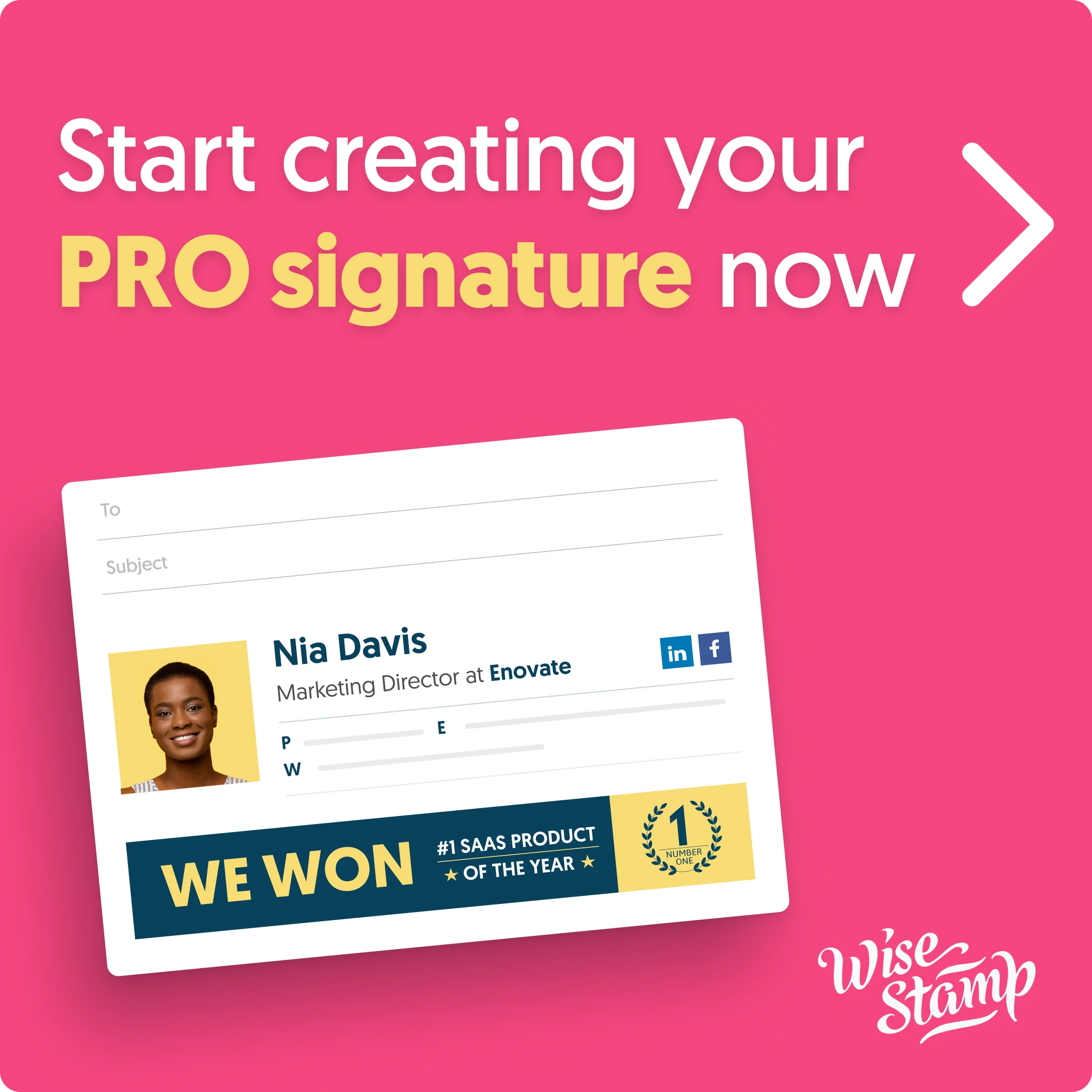Starting a side business: 12 rules for success (2024)
Learn how to create a good side business with some investment and time. Get tips to do it right so you can earn money working from home

Building a side business can bring you big future rewards if done right. You may be looking to increase your income, build future passive income, develop in-demand skills that’ll advance your career, or lay the foundations for your personal brand.
Whichever your reason is for starting a side hustle, choosing to put in the time outside of your day job is a powerful investment in your future, but it will also take a fat bite out of your spare time.
In the past year alone, my side business as a freelance content marketer has helped me quit my day job while nearly doubling my income and cutting my workweek in half by signing a single high-value client.
I’ve landed contributor agreements with Forbes, Entrepreneur, Business Insider, and my website recently had its 1 millionth reader thanks to all of my hard work creating in-depth content in the hours outside of my day job.
1. Don’t quit your job before you start a business
Don’t quit the job that serves as your primary source of income without already having steady revenue and traction with your side business. Even if you have a nice cushion of savings set aside, it’s easier than you think to burn through it and that’s a lot of pressure to place on yourself.
I can’t emphasize this enough. Don’t quit your job right away. You need to take your time in fully vetting an idea, learning about your target market, and testing that idea with them before making the solo decision that your idea must be great and therefore instantly profitable.
Having the time to continue thinking things through and seek the advice of others will greatly benefit your side business, rather than rushing through the creation process with tunnel vision toward your goal of launching.
Even more importantly, unless you’re working on a high-growth startup and can secure investor funding, you’re going to need some form of sustainable income before your side business is able to become a sole source of income for you. This is where your job comes in because it’s essentially an investment that fuels the growth of your side business.
The last thing you need is the stress and strain of worrying about your cash flow early on while you’re still trying to figure out how to hit the accelerator on your side hustle. I’ve made that exact mistake, and in turn, had to make some difficult sacrifices to keep the business alive and growing.
Starting your business while working a full-time job will undoubtedly be difficult, but it’s doable. Take these steps into account and you’ll be well on your way to becoming your own boss. Imagine that awesome feeling.
Up till now I just told you what NOT to do.
So when do you quit your job?
Only quit your job when your side business reaches financial stability (steady and predictable income) that can support your lifestyle.
2. Before taking the first step, first make the commitment
This will be difficult, it will strain your relationships, and you’ll continually be forced to make tough decisions when it comes to how you allocate your time, which is now your most precious resource. It doesn’t get easier over time, either.
In fact, the more successful your side business becomes, the more ruthless you’ll have to become at managing opportunities and deciding what you can afford to take on with your limited amount of time. Having a side business will be an incredibly challenging experience. It should be.
The pace at which you’re able to build your side business is directly correlated to the amount of time you’re able to free up each week to work on growing the business.
The first thing you should do before setting out on starting your side business is making a written pledge to yourself. Treat this pledge like a contract; one that outlines the short-term sacrifices you’re willing to make in order to create the lifestyle you want in the long term.
After that, we create a list of all the activities and responsibilities you have with the corresponding time commitments they command each week. We take note of the ones you can afford to remove or lessen your involvement with for at least the immediate future and let them know you’re stepping back a bit to focus on a new project that means a lot to you.
Once you’ve unlocked some time for your side business each week, it’s time to figure out when you work best so that you can start carving out some of your best hours to allocate toward your project.
Be selfish and give yourself the best hours of your day.
3. Learn from other people’s mistakes
However, when you’re new to working for yourself, there are a lot of potentially crippling mistakes to be made that can push success even further off into the distance. Today, we’re going to explore some of those mistakes (I’ve made most of them myself), give you detailed insights on how to avoid them, and build a foundation for learning how to grow your business before you quit your 9-5 job.
Making mistakes when you start out is almost inevitable, but the amount and severity of those mistakes can be reduced. I’ll try to give you the wisdom you’ll need to avoid the worst of your mistakes, based on my experience.
Video: how to learn from other people’s mistakes

4. Define which skill sets are required to start your side business
Be honest with yourself. What are you good at? What are you great at? Where is there room for improvement? If you want to be successful in starting your side business quickly, you need to maximize the time you spend doing what you’re great at and work to either outsource your weaknesses or avoid getting into a business where you’ll be forced to use them in the first place.
You likely possess at least some of the necessary skills to bring your side business to life, but if you don’t, you’re now faced with a tough decision. Spend time learning a new skill or outsource to someone else who can help. There’s no right or wrong answer, it depends solely upon your spending threshold, urgency, and desire to learn new skills.
If the skill is going to be an ongoing, core need for the future of your business, and you’re genuinely interested in the subject matter, you owe it to yourself to invest the time and become an expert at it. This isn’t a race, and you’ll greatly benefit from investing in building the skills you’re interested in.
For the sake of keeping startup costs as low as possible, you’re going to need to learn some specific skills in order to pull off starting your own business. You should, however, be constantly looking for and evaluating opportunities to outsource your weaknesses, when possible.
Video: Build a side business you have passion for

5. Validate your idea before building something nobody wants
In an intensive study of why startups fail according to 101 founders, the #1 reason most entrepreneurs report failing is a lack of market need for their product (cited by over 42% of the failed companies). This really highlights the need to fully validate your idea and get honest feedback from paying customers before you start building, creating, and spending money. Let alone consider quitting your day job on a whim to pursue just an idea.
It’s human nature to think we’re right and that our ideas are always amazing. As entrepreneurs, we have a lot of pride when it comes to our work. Unfortunately, our business concepts and product ideas are often not fully thought out, useful, or even properly researched.
There’s an art and a science to objectively validating your business idea. It’s easy to take off with an exciting new project in mind and work inside of your little bubble without ever involving anyone else for feedback during the process. When you emerge on the other side, you would be lucky to have created something that is received well in the marketplace or even has a market of paying customers in the first place.
Keep that excitement you have. Channel it into a positive, calculated direction, and intelligently test your way into assumptions about your potential new side business. Use free tools like Google’s Keyword Planner and Trends to get an accurate picture of how many people are searching for solutions related to keywords that describe what your product or service would do for your customers.
6. Determine your competitive advantage
A competitive advantage is defined as the unique advantage that allows you as a business to generate greater sales or margins, and/or acquire & retain more customers than competitors. It’s what makes your business, your business.
This can be in the form of your cost structure, product offering, distribution network, customer support, or elsewhere in the business. If you’re going to start a business, it needs to be unique in some ways.
An example of a very powerful competitive advantage would be owning the exclusive rights to a brand new microprocessing chip that Apple is 100% going to need to include in every iPhone they build moving forward. Now, something like this is very rare. Apple hires some of the best & brightest in the world to cut down on the possibility of things like this happening and they work with outside suppliers who can guarantee these types of products as well.
Your strongest competitive advantage may be your own personal skill set, your unique experience, storytelling ability, industry knowledge, strategic relationships, or your personal brand that you’ve built. The strength of your competitive advantage will greatly affect your early results in learning to sell your product or service. Your competitive advantages need to be built into everything you do as an entrepreneur.
7. Set measurable and realistic business goals
Without setting attainable business goals and realistic deadlines for yourself, you’re going to spend a lot of time spinning your wheels. It’s hard to get anywhere if you don’t know exactly where you’re going.
In my experience, it works best to set daily, weekly, and monthly goals for my side business. It’ll help you stick with both short-term and long-term objectives, especially if you want to start a freelance business that depends very heavily upon driving meaningful results for your clients in tandem with regularly bringing new business in the door.
In the beginning, your daily goals are most likely small wins or to-do list types of items. I use the iPhone & Mac App, ToDo to handle my daily schedule and track the small wins for my day. It allows you to physically check things off your list, which has a strong psychological effect on me.
Weekly goals are the more significant wins that likely can’t be completed in just one morning or evening’s worth of work. An example of a weekly goal would be finishing one solid blog post designed to drive in traffic that’ll be checking out your brand new product. Since there are a lot of different components that can go into the creation of a great blog post, this is a realistic weekly goal.
Monthly goals start to become big-picture-focused. If you’re trying to build pre-launch buzz for your product or service, a one-month goal could be getting your first 100 email subscribers that are interested in learning more about your product once you launch. Month 2 could then be to double or triple that list size, or to get your first working prototypes ready for user testing. This will vary greatly depending on the type of business you’re in.
The further out you start planning your goals and deadlines, the more difficult it will become to make them realistic. You start to depend on assumptions of progress in certain areas, or of things outside your control coming together by specific dates. It requires some flexibility and you shouldn’t allow yourself to get overly stressed. Nevertheless, having these defined goals and dates set is what’s going to keep you on track and moving forward.
8. Map your business plan in detail
How are you going to reach your goals? It’s great to have a ton of exciting milestones, but if you have no real plan on how you’re going to hit those targets, then you’re really just hoping and wishing rather than putting in the hard work that’s needed to create the business.
It’s one thing to set your goals, and yet an entirely different activity to map out exactly how you’re going to get to points B, C, D, and beyond. If you find yourself questioning how to make it to your milestones, take the initiative to seek outside advice from friends, family, or personal mentors.
Be proactive. Nobody can do this for you, but you won’t be able to do it all on your own, either. Your ability to problem-solve and navigate around your obstacles will determine the level of success with your side hustle.
Here’s an example of mapping the route to achieving one of my goals from above. Let’s say my daily goal on a Monday is to finish all of the copy content for a blog post I’m planning on publishing. The weekly goal that this maps back to is pulling together the entire blog post, including all of the other assets like beautifully designed images, links a well-thought-out keyword strategy, and influencer distribution that will make this post truly awesome.
Moving up to the monthly level, launching that blog post and seeding it out to friends, family, mentors, and the rest of my network is designed to get 100 initial supporters committed to buying my product once it has been fully produced. This is a proof of concept and tells me that there’s a desire for that product in the marketplace.
9. Take care of all the legal issues required for your new business
Starting an LLC on your own is a time-consuming process. Fortunately, there are many services that can help you with starting a company. Such LLC websites greatly facilitate the paperwork process. Therefore, the popularity of such platforms is absolutely justified.
But business owners still face a problem: which LLC formation service to choose for business incorporation? After all, there are a huge number of platforms providing such services. Each of them offers its own list of services, prices, and have their own pros and cons.
It is difficult to make an informed decision when a person is overwhelmed with so much chaotic information about services found in different corners of the Internet. To do this, you need to conduct a whole study and compare several dozen options according to various criteria.
Or refer to the ready-made relevant comparative characteristics of the best LLC websites to form an LLC, where the most important aspects such as the work of the support service, the quality, and timing of business formation, customer reviews have already been analyzed by specialists and are presented in a convenient form. So, choosing the best LLC service for starting a company will not be a difficult task and will not take so long.
10. Outsource everything someone else can do cheaper at similar quality
This one is all about focus. Look for opportunities to outsource every possible part of your business creation that you can, so that you can free up more time to do what only you can do within your business.
The point is that you need to be doing only what you do best. While it would be great if you could code your own website to test out your digital service idea, if you don’t already command a knowledge of engineering, you’re looking at a few months of dedicated learning time just to get to the point where you’ll be able to understand the basics.
If you’re comfortable taking that time to learn and build the skills you’ll need, then it’s a worthy investment of your time if you have evidence that there’s indeed a market demand for your concept.
I’m a huge advocate of utilizing productive online business tools and skilled freelancers to help speed up and streamline the progress toward my business goals. Websites like LinkedIn ProFinder, Scripted, Dribbble, and Upwork have all become integral and affordable resources for me to scale my writing, design, and development abilities beyond what I can do simply on my own.
An alternative to hiring freelancers would be bringing in a partner, full-time employee, or part-time contractor who can complement your skills and abilities.
11. Seek feedback from customers and make adjustments to your offering
Your goal is to build a product or service that provides value to people. It does no good to build a product that nobody wants. One of the biggest luxuries you’re afforded by deciding to start a business and test the viability of your new company before leaving your day job is that you can take the time you need to get ample feedback.
This is a crucial step in evaluating any side business because you have such a limited amount of free time to work with, that you don’t want to waste it on something without serious growth potential. It’s important that you seek unbiased, outside feedback to make sure you’re building something that’s actually marketable.
To find your early feedback group, you want to target people that you know will give you only an honest opinion. Reach out to them personally. My go-to group consists of a handful of close entrepreneurial friends and a few mentors I regularly keep in touch with.
From here, you can start to widen your scope for feedback and begin incorporating Facebook, LinkedIn Groups, Reddit, ProductHunt, GrowthHackers, and even people at your local coffee shops who appear to be within your target market.
I’ve found the most effective way to frame asking for feedback is to simply ask for help. People love helping others, and if your request is kind & genuine, most people are willing to give a surprising amount of their time to help you in pursuing something you’re clearly passionate about. Make their opinion feel extremely valued and really reinforce just how much a few minutes of their time would mean to you.
12. Keep work and personal projects strictly separate
It may seem tempting to create a better version of the company you currently work at but unless your employer missed some major lessons along the way, your contract probably clearly stipulates that you’ve agreed not to do that.
Plus, that’s just bad practice and it will destroy a lot of relationships that could instead be very helpful for you one day. I go into way more detail in my post about how to avoid getting fired (and sued) while starting a side business.
Fully understand the agreements you signed when you started your job. If you’re under any non-compete clauses, assignment of invention clauses, or non-disclosure agreements, then it’s best to consult an attorney for personalized advice on this matter. I promise it’s worth the investment upfront.
Print out every contract you’ve signed and take it in to have it reviewed by an attorney. Fully disclose your proposed business concept and your attorney will give you their objective opinion on whether or not you’re violating any of your agreements. Ask for guidance on how to stay safe moving forward.
It may seem obvious but don’t work on your side business during company time. You’ll also need to refrain from using company resources on your project, no matter how tempting that may be. This includes not using your work computer, any online tools, software, subscriptions, notebooks, or seeking the assistance of other employees.
If a link is ever traced connecting your side business to anything directly related to your job, you expose yourself to potential legal action. Just don’t do it, and you’ll have nothing to worry about.
Parting words
Building your own business takes time. Even more so when doing it as a side hustle. Knowing the difficulties of achieving your goals and aspirations at the outset will mentally prepare you for the sacrifices ahead.
But always keep your eyes on the great rewards to come; being your own boss, doing what you love, having passive income to spend on things you enjoy, and the satisfaction of having built something of your own (with blood sweat, and tears) and seeing it flourish.
I wish you the utmost success, and the best of luck (it never hurts).

